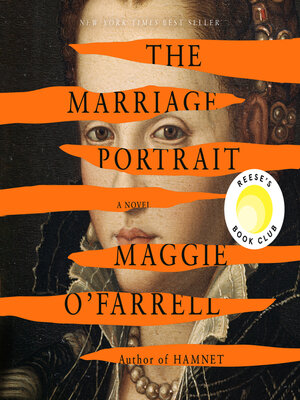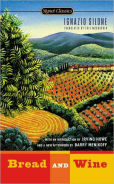
In my book club’s choice for this month, Lucrezia de’ Medici, third daughter of Cosimo de’ Medici, and the Duke of Ferrara, Alfonso d’Este, step out of Robert Browning’s poem “My Last Duchess” and are brought to life by the author of Hamnet. When her older sister dies suddenly, Lucrezia is forced to take her place in the politically important marriage with Alfonso. Only 16, she is married to him and carried off to Ferrara in 1560. A year later she is dead, rumored to have been poisoned by her husband.
That much is true, though today historians think she died of tuberculosis. O’Farrell expands the story, creating a rich tapestry of the time and a deep dive into a sensitive young woman’s experience. The narrative alternates between the last few months of Lucrezia’s life when Alfonso has removed her from the castello to a remote fortezza, and the fuller story of her life leading up to this ending.
During her childhood in Florence, Lucrezia leads a limited life, confined to the nursery area where she feels different from her many siblings, older and younger. Imaginative and artistic, she has a rich inner life. And she’s a fierce child, pushing against restrictions and yearning to see the tiger her father has had imported for his personal zoo in the lower reaches of the palazzo.
Since we know from the historical note at the beginning that she will die, the suspense that powers the novel—jacked up every time we return to the threatening fortezza—comes from wondering why it must come to that and whether she is able to resist in any way. Even in the other sections, there are hints and warnings, such as her learning about the Trojan War and how Agamemnon sacrifices his own daughter Iphigenia after pretending she is to marry Achilles.
O’Farrell’s luscious writing pulled me in. I felt the prick of hairpins in Lucrezia’s hair, the stiff material of her gown. The “sweet, cloying smell” of lilies in her chamber came to me as did the “waterfall of noise” that “crashes down on her” when “[t]he gates creak open” and the glare in her eyes as she steps out of the palazzo where a carriage waits to take her to her wedding.
After the wedding, she and her maid are carried off to a villa in rural Tuscany. “They travel along a wide road, on either side of which are rows and rows of fruit trees—Lucrezia could, for a while, make out branches heavy with the round curves of peaches and perhaps the tear shape of lemons. But now it is too dark to see anything at all.” Meanwhile, Alfonso has been called back to Ferrara to deal with an emergency: his mother and oldest sister refusing to give up the new, forbidden Protestantism.
Some people in my book club considered the portrayal of a noble woman such as Lucrezia objecting to a political marriage to be an anachronism. Marriage at that time was considered a transaction, especially for rulers. Women such as these were raised knowing that marriages would be arranged for them based on political and/or economic benefits. Instead, this story projects modern-day women’s expectations of personal agency and a loving marriage on both Lucrezia and Alfonso’s sister Elisabetta, who is dallying with one of the guards.
Since I’m also reading Phillipa Gregory’s magnificent nonfiction book Normal Women: Nine Hundred Years of Making History, I’ve learned that some women did rebel against being subjugated and treated as property, even during this period. Therefore, I didn’t find it hard to believe that, out of all the women in the book who made no complaint about their arranged marriages, there could be a child such as Lucrezia, raised in isolation and temperamentally different from her siblings, who would find it a terrifying prospect. Nor that Elisabetta, with all the dissension and rebellion within her own family, might give in to the attractions of a handsome guardsman.
I do agree, though, that many—most?—historical novels feature women and sometimes men whose modern sensibilities are at odds with their time period. I assume this is a necessary adjustment to attract the attention of modern readers.
One drawback of being exclusively in Lucrezia’s point of view is that her interest in and understanding of the other characters is limited. Thus, we don’t get to know them very well. I did find Alfonso interesting, with his combination of ruthlessness—necessary for anyone trying to rule in such embattled times—and aesthetic awe of the castrati’s music, not to mention his rare whimsy. I would have liked to know more about Lucrezia’s maid Emilia, too.
The way O’Farrell orchestrates verb tenses captured my attention. Most chapters are in present tense, some, such as the one about the tiger, in past. And there’s even at least two sections in future tense. Usually, as is normal, the past tense is used for memories and flashbacks in present-tense sections, but now and then it is the past perfect. These are not errors, I believe, but a subtle way of capturing the multiple currents of time that swirl around us.
My book club discussed the ending at length. Some found it ambiguous and, indeed, came up with a few different interpretations. I won’t go into that, of course, but would love to hear what you thought of it, if you read the book.
Do you enjoy historical fiction based on the lives of real people? Why or why not?
